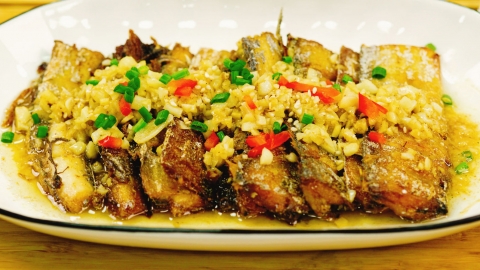Can you still eat hairtail fish if it turns yellow?
Generally speaking, whether yellowed ribbon fish is still edible depends on the specific cause and extent of discoloration. If in doubt, it's best to avoid consumption to ensure safety. Detailed analysis is as follows:

If the ribbon fish has only slightly yellowed on the surface, with no unpleasant odor and the flesh remains firm and elastic, the discoloration is likely due to fat oxidation or mild exposure to air during storage. In such cases, the fish can be safely consumed after thorough washing and cooking at high temperatures. Before cooking, remove the discolored yellow portions and ensure the fish is fully cooked to avoid any negative impact on taste from minor oxidation.
If the yellowing is extensive, accompanied by a strong fishy odor, soft and sticky texture, or abnormal mucus on the cut surfaces, this indicates spoilage and significant bacterial growth, making the fish unsafe to eat. Consuming spoiled ribbon fish may lead to gastrointestinal discomfort, including symptoms such as abdominal pain and diarrhea, posing risks to health.
When purchasing ribbon fish, opt for fresh fish with a bright, silvery-white and glossy surface to reduce the likelihood of yellowing. Store the fish sealed in the refrigerator or freezer, avoiding repeated thawing to slow down spoilage. Upon noticing yellowing, carefully examine the fish’s condition; if uncertain, refrain from eating it and prioritize food safety.






